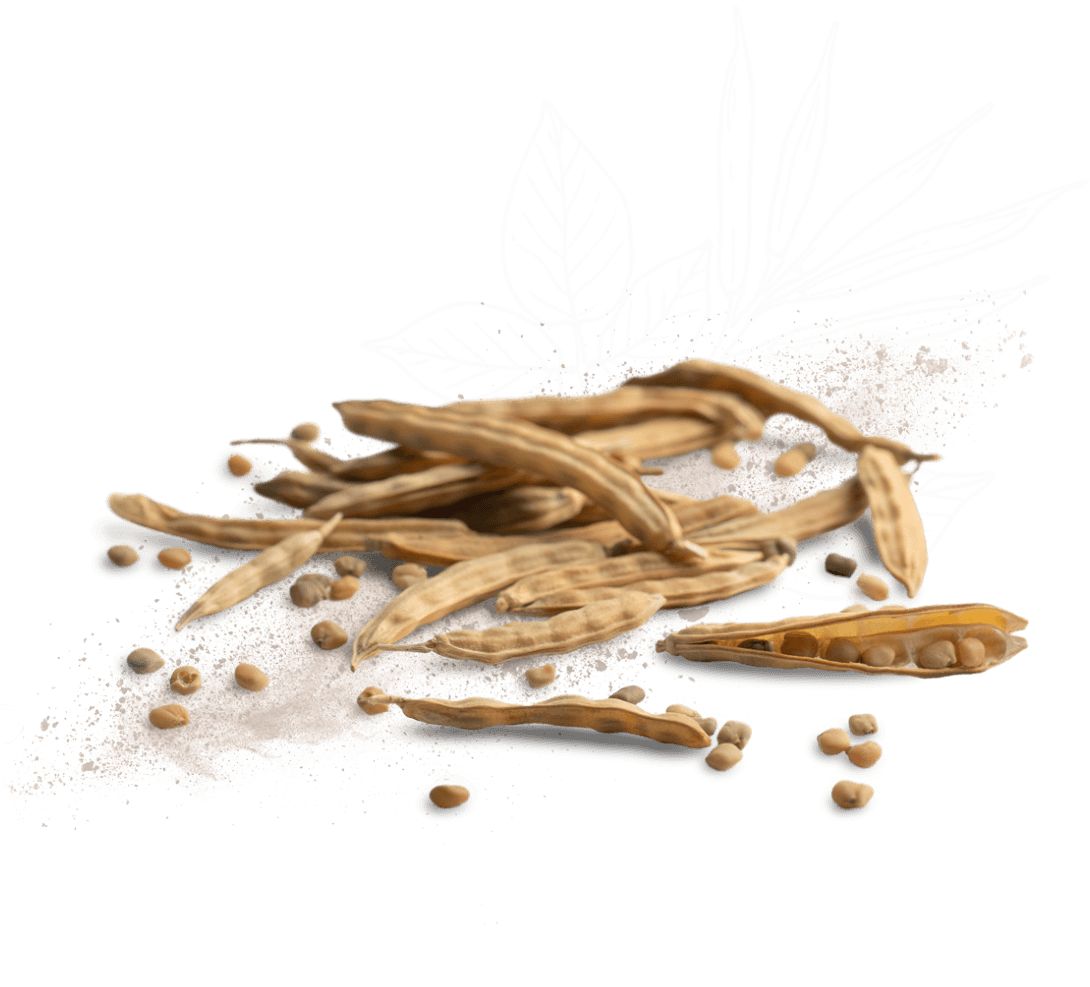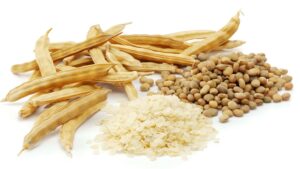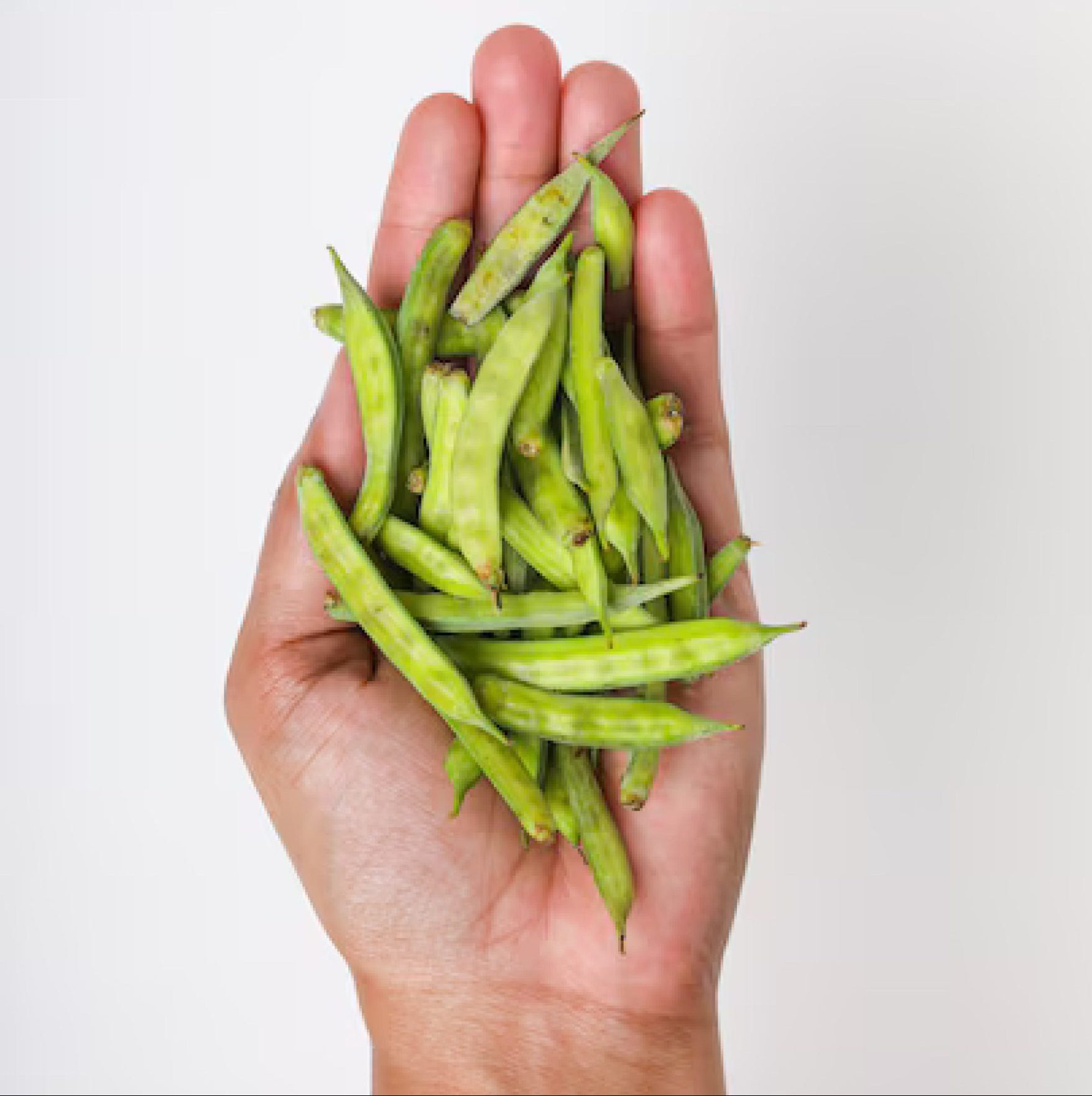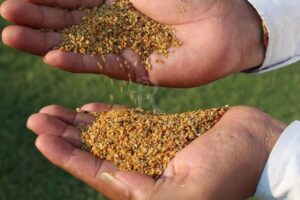Cassia Gum for Food, Pet food – Low anthraquinone content
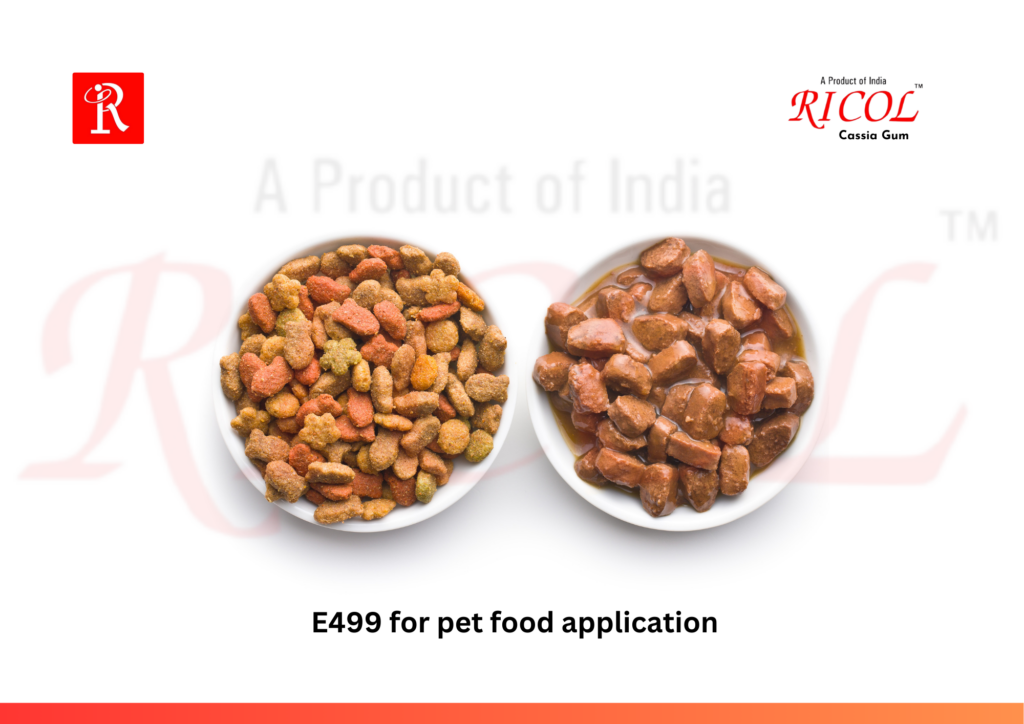
Cassia Gum in Food, Pet Food & Technical Industry Cassia gum, a natural gum derived from the seeds of the Cassia plant, has gained significant attention in the food and industrial sectors due to its versatile properties. This eco-friendly and cost-effective ingredient is widely used for its binding, thickening, and stabilizing qualities. In this blog, we will explore the various uses and benefits of Cassia gum and its growing significance in various industries. What is Cassia Gum? Cassia gum, also known as Cassia tora gum, is derived from the seeds of the Cassia tora plant, a leguminous shrub found in tropical regions, particularly in India. The gum is obtained by grinding the seeds of the plant, producing a powdery substance with a variety of useful properties. It has a neutral taste and is highly soluble in water, making it ideal for a range of applications. Benefits of Cassia Gum Natural and Eco-friendlyCassia gum is a natural, biodegradable product, making it an environmentally friendly alternative to synthetic gums and stabilizers. Its production process has minimal environmental impact, promoting sustainable practices in industries that utilize it. Versatile Thickening AgentOne of the primary reasons Cassia gum is so highly sought after is its exceptional ability to thicken and stabilize products. It is used extensively in the food and beverage industry, where it serves as a thickening agent in soups, sauces, dairy products, and confectionery. Improves TextureCassia gum enhances the texture of many products, adding smoothness and consistency. In bakery goods, it helps improve dough elasticity, leading to better texture and volume. In dairy products, it contributes to a creamier consistency. Affordable and Cost-effectiveCompared to other natural gums, Cassia gum is relatively low-cost, making it an economically viable solution for manufacturers looking to reduce production costs while still maintaining quality and functionality in their products. Health BenefitsBeyond its functional uses in food production, Cassia gum also has potential health benefits. It is known to support digestive health and may act as a mild laxative, helping in the treatment of constipation. Its antioxidant properties can also contribute to overall health. Uses of Cassia Gum Food IndustryCassia gum is most commonly used in the food industry as a thickener and stabilizer. It is used in the production of sauces, dressings, ice cream, dairy products, and bakery goods. Its ability to retain moisture and improve texture makes it an ideal ingredient for processed foods. Cosmetics and Personal CareDue to its emollient and moisturizing properties, Cassia gum is also found in a variety of cosmetic products. It is used in lotions, shampoos, conditioners, and face creams to enhance the product’s consistency and improve skin hydration. Pharmaceutical IndustryIn the pharmaceutical industry, Cassia gum serves as a binder and stabilizer in the formulation of tablets and capsules. It helps in the uniform distribution of active ingredients and ensures the stability of the product. Textile IndustryCassia gum is used as a finishing agent in the textile industry. It enhances the feel and texture of fabrics, providing a smooth finish without compromising the fabric’s integrity. Oil and Gas IndustryDue to its high viscosity and ability to retain moisture, Cassia gum is used in drilling fluids for the oil and gas industry. It helps to improve the flow properties of the fluids, ensuring better efficiency during drilling operations. How to Use Cassia Gum Using Cassia gum in various products is straightforward, but the quantity required will depend on the specific application. Typically, it is used in concentrations ranging from 0.5% to 2% of the total formulation, though this can vary. It is highly soluble in water and should be mixed carefully to avoid clumping. Conclusion Cassia gum is an incredible natural resource with numerous benefits and applications across various industries. Whether you are involved in food production, cosmetics, pharmaceuticals, or textiles, Cassia gum offers a sustainable, cost-effective solution that enhances the quality and functionality of your products. As demand for natural and eco-friendly alternatives continues to grow, Cassia gum is poised to play a significant role in the future of manufacturing and production. By incorporating Cassia gum into your products, you can take advantage of its remarkable properties while contributing to more sustainable practices. If you’re interested in learning more about Cassia gum or incorporating it into your business, feel free to reach out to suppliers who specialize in this versatile ingredient.
Free of ethylene-oxide – ETO Free Guar Gum Statement
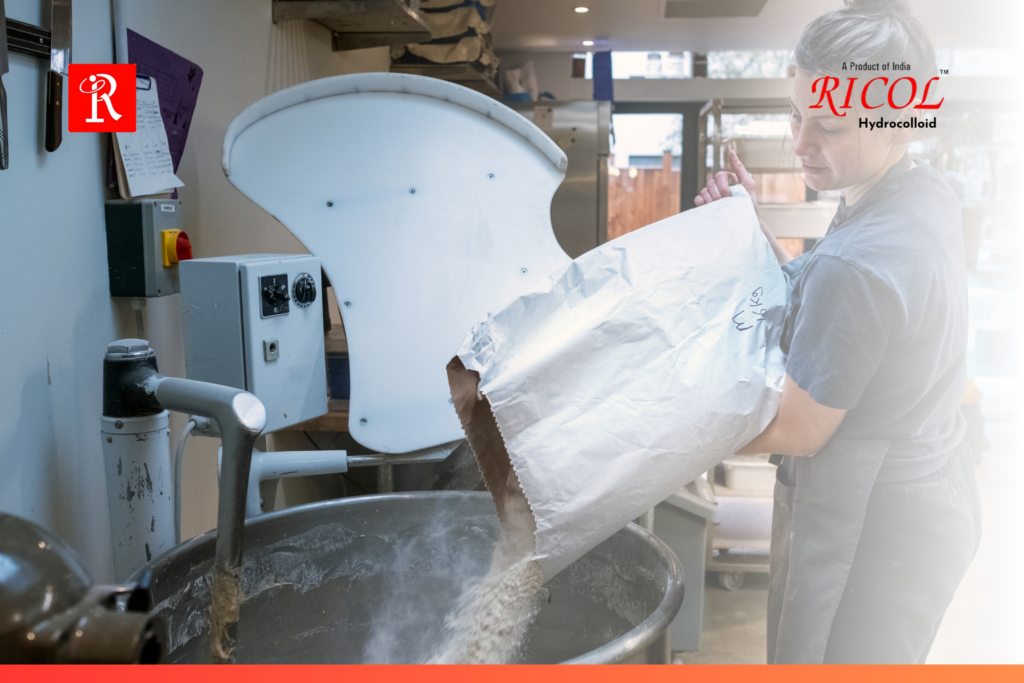
What is Ethylene oxide (EtO) and Why to use EtO Free Guar gum powder ? Guar gum powder is a popular ingredient commonly used in Food, Healthcare etc. Guar gum powder is referred due to its excellent thickening, stabilizing, film forming & emulsifying properties, Rama Gum Industries is recognized for its manufacturing and supply of NON-ETO Guar gum powder to many European, American and Asian countries. Ethylene oxide is used as a disinfectant to prevent the presence of mold and reduce the risk of salmonella. Its “effectiveness in terms of disinfection” is known, recalls the National Agency for Food, Environmental and Occupational Health Safety (ANSES), Ethylene oxide has been banned in the European Union since 1991 as a pesticide and since 2011 its use has been banned as a “food and feed protection product”. However, it remains authorized for the disinfection of medical equipment at European level, the maximum residue limit (MRL) of ethylene oxide authorized being set at 0.05 mg / kg. It is not even approved as an active substance in plant protection products in the Union. However, since September 2020, the European RASFF (Rapid Alert System for Food and Feed) system has notified the entry of multiple foods contaminated with ethylene oxide in European countries. Currently, the United States permits the use of ethylene oxide (EtO) for the reduction of microbial contaminants on various commodities. The U.S. enforces a limit of 7 parts per million (ppm) for EtO residues applicable to the spice and herb group (except basil), licorice (roots), sesame, peppermint, spearmint, and dried vegetables. Ethylene oxide is regulated in food by Reg. (EC) 396/2005, which defines it as the sum of ethylene oxide and 2-chloro-ethanol (a related product of its) expressed in ethylene oxide. Ricol® Guar Gum – ETO Free Guar gum powder Rama Gum Industries India Ltd. provides completely ETO free Guar gum powder. Where the raw material used to manufacture (Guar Splits) are also free from ethylene oxide. Additionally, we doesn’t use any ETO treatment in our Manufacturing, packaging or storage sites. ETO Free – Guar gum is certified and tested used third party lab compliance. ETO free Guar gum is very compatible with wide variety of organic & inorganic substance with also few dyes & various constituents of food. It is observed that in low concentration, guar gum carries excellent settling properties & it also acts as filter aid. ETO free Guar gum powder carries sturdy hydrogen bonding properties. Guar Gum is reasonably cost effective as compared to any other thickening agent or effective binder. Guar gum is also popularly known also recognized as gomme guar, goma guar, galactomannan, guarkernmehl, and guaran. For any further queries, kindly connect at info@ramagum.com




